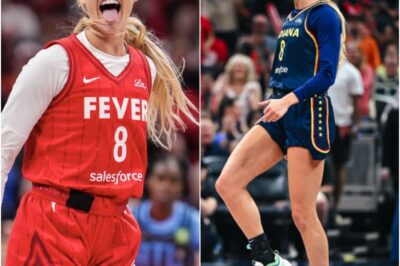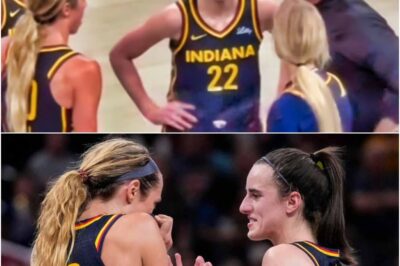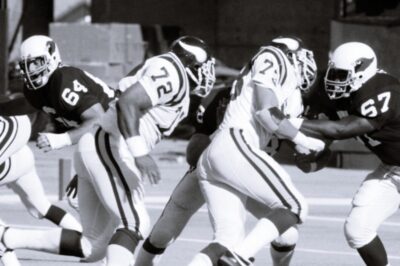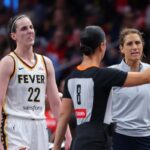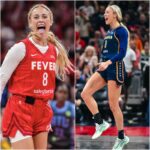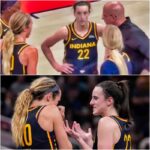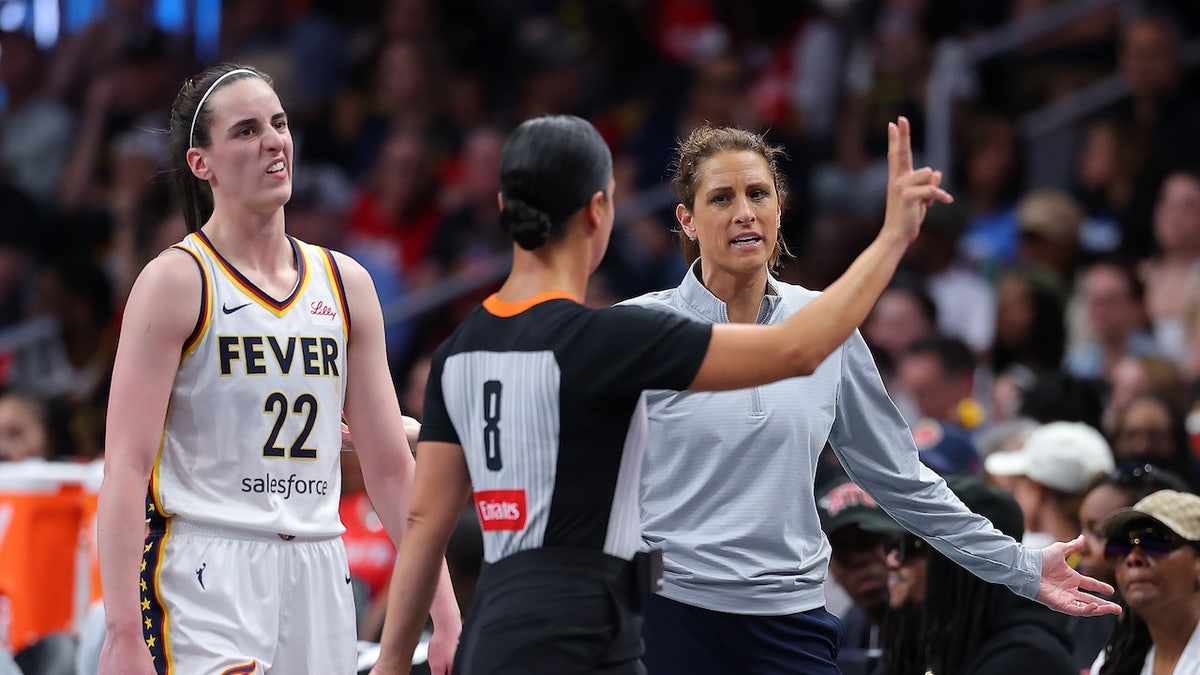
It wasn’t a foul. Not officially, anyway. The whistle never came. The referee turned away, the play moved on, and in the blink of an eye, the moment was supposed to have vanished into the endless churn of a WNBA season. But this is 2025, and the camera never blinks. The fans never forget. And when the most-watched rookie in league history is at the centre of a storm, silence speaks louder than any whistle.
Fourteen seconds. That’s all the latest viral video lasts. Fourteen seconds, but already it’s reignited a firestorm that’s been simmering since Caitlin Clark first set foot on a professional court. The footage is simple, almost mundane in its initial impression: Clark cuts through the lane, her defender lurking in the shadows. Suddenly, a shoulder—a nudge that’s not quite subtle enough to escape notice, but not quite blatant enough to demand a call. Clark stumbles, catches herself, and the play sweeps to the other end. The referee, eyes on the action, watches it unfold and then, with a flick of indifference, turns away. No whistle. No review. No justice.
Ordinary, perhaps, on any other night. But this isn’t any other night, and Caitlin Clark isn’t any other player. The camera lingers, the crowd gasps, and the internet does what it does best: freeze, replay, dissect. Once, twice, five times, ten. With each viewing, the moment grows heavier. What looked like a missed call becomes, in the court of public opinion, something far weightier. It’s not just a mistake. It’s a message.
The numbers tell their own story. The clip, barely a quarter of a minute long, has been viewed more than eight million times. It’s been slowed down, zoomed in, and analysed from every conceivable angle. The defender’s name is absent from most reposts—this isn’t about her, not really. It’s about Clark, and what she represents, and what the league seems unwilling to protect.
It wasn’t just the contact that set fans off. It was the referee’s reaction—the cold, studied nonchalance, as if daring anyone to question the silence. No hand raised, no technical, no hint of a second glance. Just a void where accountability ought to be. For many, that void is no longer neutral. It’s intentional.
The hashtags tell their own tale: #CallItForClark, #RefBias, #ThisIsPersonal, #WeSeeIt, #Protect22. They flooded the WNBA’s digital landscape within hours, a virtual protest that stitched together a pattern of neglect. Clips of Clark being hip-checked in transition, shoved on rebounds, arms slapped without a call. The message was clear, and it was growing louder: “We were willing to believe coincidence for a while. But now? This looks like someone made a decision—and everyone’s following it.”
One tweet, liked tens of thousands of times, put it in language the league’s executives could hardly ignore: “You can’t sell tickets off her name and let her get hit like this every night.” It’s a sentiment that’s been building for months, whispered in locker rooms, muttered on podcasts, and now, shouted from the rooftops of social media. Is this just bad officiating? Or is it something more systemic, a whispered message from the whistle that some players are to be tested, not protected?
It’s not the first time the question’s been asked. Since Clark’s arrival, she’s taken more off-ball contact than any rookie guard in recent memory. She draws fewer fouls per forty minutes than players with similar usage. She rarely reacts, her frustration visible only in the tightening of her jaw, the set of her shoulders. But the no-calls keep piling up, each one a brick in a wall that’s starting to look less like oversight and more like policy.
This time, though, it wasn’t just the play. It was the camera angle—tight, unflinching, damning. There was no ambiguity, no plausible deniability. It was all there, in high definition: the contact, the stumble, the referee’s indifference. And as the footage ricocheted around the world, the question grew more pointed. Is this what the league wants? A star player used to fill arenas, to sell jerseys, to boost ratings—yet denied the protection afforded to every other marquee name?
Clark herself, as ever, remained silent. She didn’t mention the incident postgame. She didn’t tweet, didn’t fume, didn’t demand an apology. But those close to the team noticed she lingered in the tunnel longer than usual, eyes fixed on the monitor, replaying the clip again and again. When a reporter gingerly broached the subject of physical play, Clark’s answer was measured, almost serene: “We keep showing up. That’s all we can do.” It wasn’t resignation. It was something sharper—a composure that cuts deeper than any outburst.
In the Fever locker room, the mood was tense. Aliyah Boston, asked about the missed call, chose her words carefully: “I just hope the game stays fair. That’s all I’ll say.” Kelsey Mitchell was more direct: “We protect each other. Period.” One assistant coach, speaking off the record, didn’t bother with diplomacy: “If they won’t call it for her, we’ll have to respond with our play. But that’s not how this league is supposed to work.”
And still, the league office remained silent. No statement, no referee review, no acknowledgement of the controversy that had devoured the news cycle for more than a day and a half. For many fans, that silence is the most damning indictment of all. “You don’t ignore the most-watched rookie in league history when she’s getting hit like this,” said FS1’s Jason Whitlock. “Unless you want her to get the message: stay in your place.”
Because at its core, this isn’t about superstar treatment. It’s about the denial of fairness, the erosion of trust. It’s about a player being held up as the face of the league—her image splashed across billboards, her highlights looping on every network—while being denied the basic protection every star deserves. “If this were A’ja Wilson getting fouled like this, the refs would throw the whole bench out,” one fan wrote. Another was even more blunt: “This isn’t just a player being targeted. It’s a league forgetting the difference between toughness and punishment.”
Can you prove intent? Of course not. Motive doesn’t show up in slow motion, and disrespect can’t be measured in frame rates. But patterns are harder to ignore. The pattern, right now, is unmistakable. Referees aren’t calling fouls when they happen to Clark. They’re not reviewing clear contact. They’re often visibly dismissive when she appeals for help. And when that happens again and again, the question stops being “was this missed?” and becomes “was this allowed?”
In the end, it’s the silence that says the most. Caitlin Clark doesn’t need to shout. The footage is doing it for her—frame by frame, play by play. No flops, no dramatics, no retaliation. Just a player getting hit, getting up, and watching the league say nothing.
And now, the fans are done waiting. Because when the whistle doesn’t blow and the cameras keep rolling, the whole world can see what’s no longer hidden. This doesn’t look accidental. This looks personal. And until someone in authority finds the courage to break the silence, that’s the story that will keep replaying—again and again and again.
News
PHOTO: Sophie Cunningham Stuns Braless in Daring Pregame Outfit
Sophie Cunningham (Photo via Twitter) Sophie Cunningham is a fashionista. Her fashion statements range from oversized blazers to showing a…
Explosive Update On Karmelo Anthony’s Murd3r Trial Released
Karmelo Anthony and Austin Metcalf (Photos via X) A trial date has been set in Karmelo Anthony’s murd3r case following…
Mystery Man’s Heated Lecture to Caitlin Clark in Fever Huddle Has Social Media Asking Questions
Caitlin Clark in Fever huddle (Photo via X) WNBA fans had questions after a certain gentleman was seen speaking to Caitlin…
Fever Prez Kelly Krauskopf Faces Backlash Over Strange Caitlin Clark Remarks — And Fans Are NOT Happy What was meant to be a quick quote turned into a social media firestorm. Kelly Krauskopf’s odd comment about Caitlin Clark has sparked major outrage—and the silence from the team isn’t helping. What did she actually say… and why are fans demanding answers?
Kelly Krauskopf Caitlin Clark (Photos via Imagn Images) Indiana Fever general manager Kelly Krauskopf is taking heat on social media following…
Charissa Thompson Leaves Everyone’s Jaws On The Floor With Her Stunning Photos On The Water
Charissa Thompson (Photo By Eric Hartline-Imagn Images) At times, all you need to be in peace is a boat, a…
BREAKING: NFL Legend Who Survived 4 Pris0n Stints & Multiple Shootings Tragically Di3s — Fans STUNNED by His Final Chapter He cheated d3ath more times than most could count — four prison sentences, several gunshot wounds, and a past that never let go. But now, the story ends in heartbreak. Tributes are pouring in, but so are the questions. How did a life this wild… end so quietly?
***NOTE: Randon player cleats, not the player who di3d*** NFL Player cleats. Credit: Kim Klement-USA TODAY Sports Former NFL star Luis Sharpe…
End of content
No more pages to load

